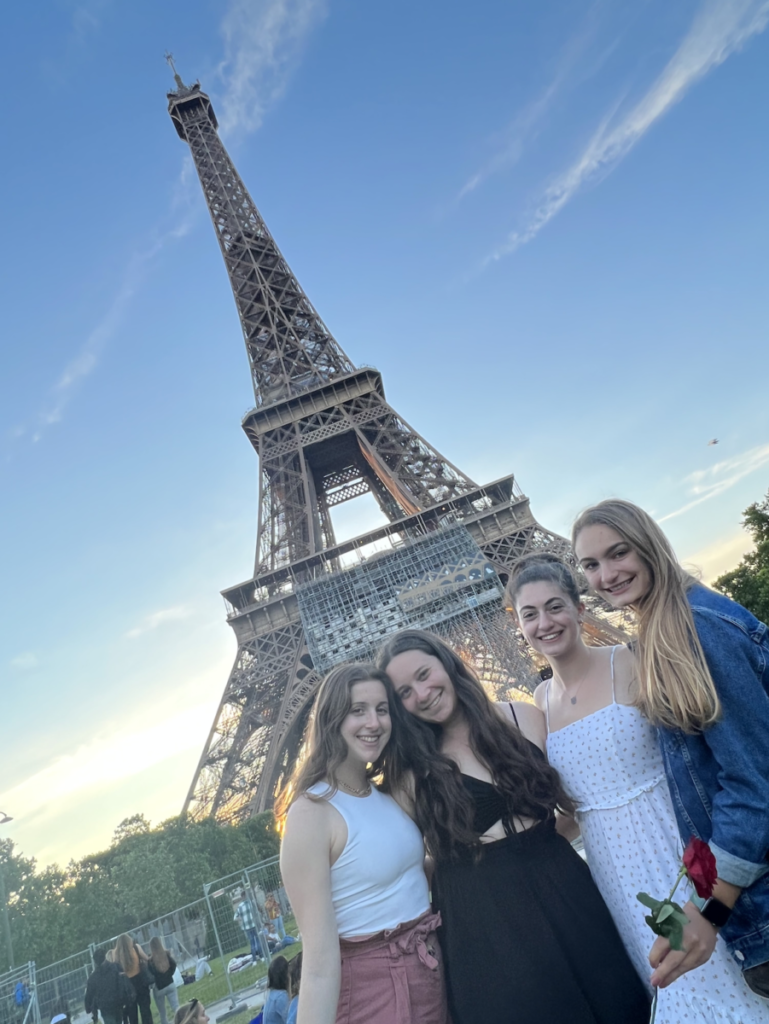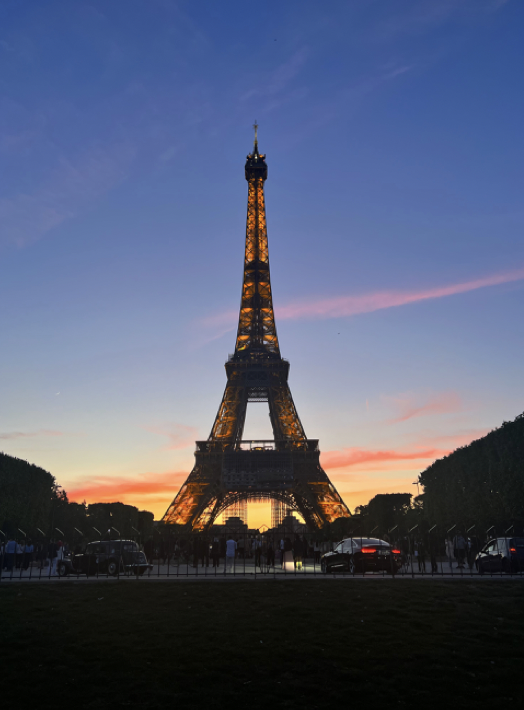On Wednesday, June 1st, a group of students took advantage of having no major assignments due the next day and spent the evening at the Eiffel Tower. All walking towards the tower from different directions due to the locations of our various metro stops, we met under the center of the tower which we quickly learned was not the ideal location. We relocated to the lawn where we found an open area of grass to have our picnic. I enjoyed my caramel crepe while others were feasting on bread and cheese. Little did we know that we had the best photographer among us (Jacob) who gave us a little spontaneous photoshoot gifting us the ability to remember all the fun we had that night.

On our first day in Paris we did a boat tour as a class and when we passed the Eiffel tower our guide shared some interesting history about it. The tower’s construction was complete in 1889 in time for the World’s Fair and was not meant to be a permanent structure. When it was first built, Parisians were quite critical of the tower claiming that it was an eyesore and did not fit in with the city. However, despite this opinion of the locals, the Eiffel Tower has become one of the most famous landmarks and is the staple of the city.
This got me thinking about the neuroscience behind the perception of beauty. In previous classes, I have learned about perception of beauty in faces/people and the brain regions involved in that but did not know much about how this applied to objects such as buildings or art. In searching the literature, I was introduced to the field of neuroaesthetics (Iigaya et al., 2020). Neuroaesthetics explores the neural basis for judging art, of which architecture and monuments fall under. Early studies found that the brain regions involved in viewing pleasant aesthetics were also involved in reward pathways. This suggests that looking at an aesthetically pleasing work of art elicits a similar response to other rewarding stimuli. They also explained that assigning aesthetic value is done by breaking a stimulus down into elementary features to be processed. This is a concept I am familiar with from NBB 301 when we discussed sensory processing.

In my very unprofessional opinion, I thought the Eiffel Tower was pretty when it was lit up, but during the day it was more exciting due to its significance rather than its beauty.
Reference:
Iigaya, K., O’Doherty, J. P., & Starr, G. G. (2020). Progress and Promise in Neuroaesthetics. Neuron, 108(4), 594–596. https://doi.org/10.1016/j.neuron.2020.10.022
